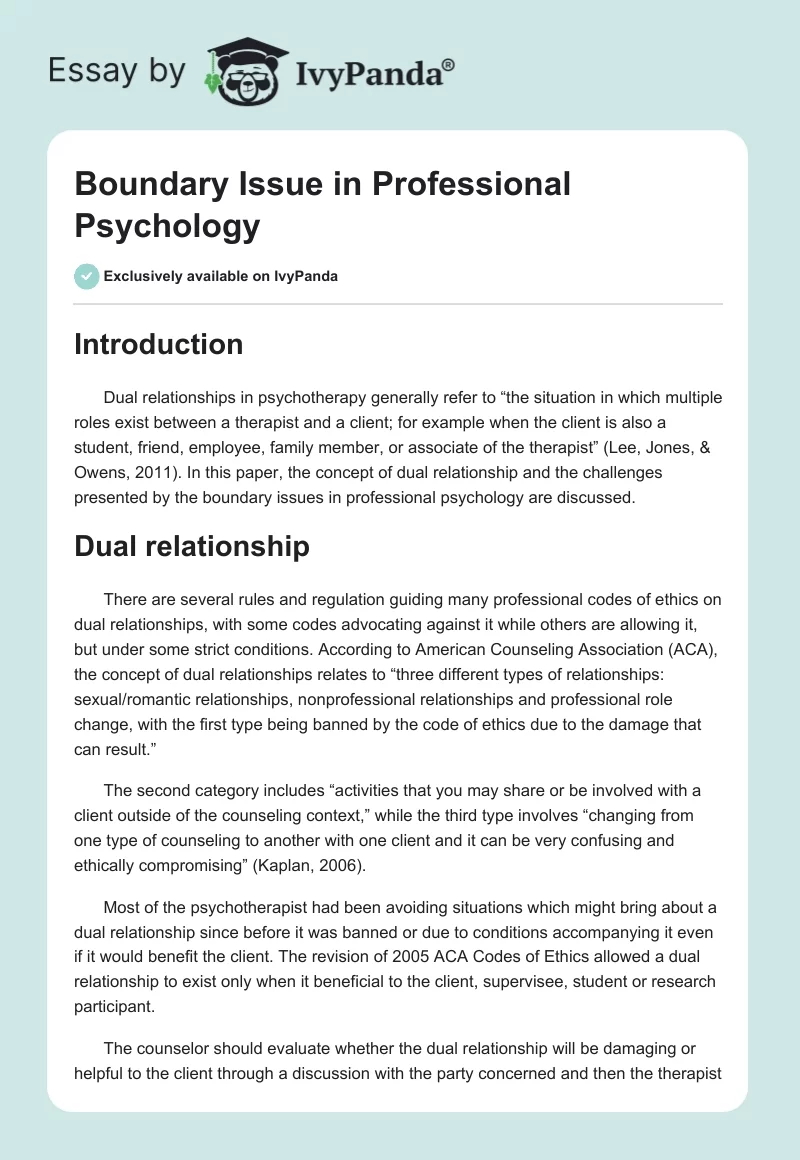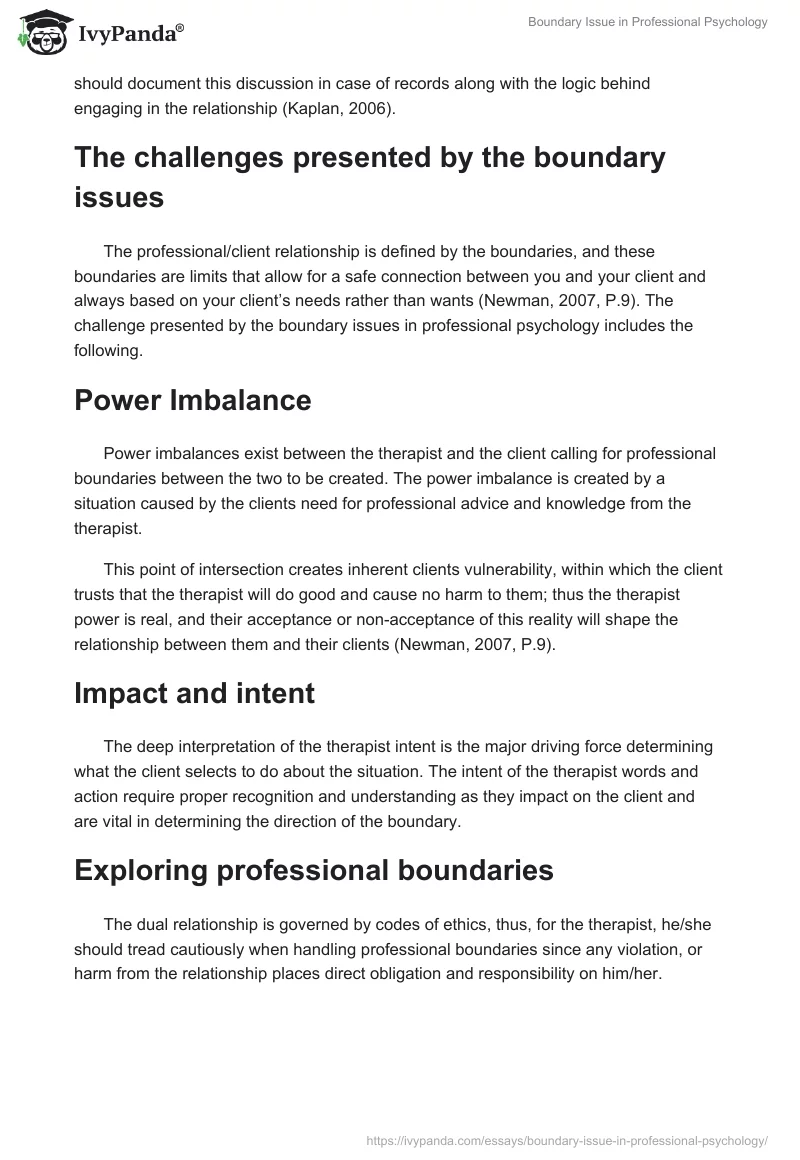Introduction
Dual relationships in psychotherapy generally refer to “the situation in which multiple roles exist between a therapist and a client; for example when the client is also a student, friend, employee, family member, or associate of the therapist” (Lee, Jones, & Owens, 2011). In this paper, the concept of dual relationship and the challenges presented by the boundary issues in professional psychology are discussed.
Dual relationship
There are several rules and regulation guiding many professional codes of ethics on dual relationships, with some codes advocating against it while others are allowing it, but under some strict conditions. According to American Counseling Association (ACA), the concept of dual relationships relates to “three different types of relationships: sexual/romantic relationships, nonprofessional relationships and professional role change, with the first type being banned by the code of ethics due to the damage that can result.”
The second category includes “activities that you may share or be involved with a client outside of the counseling context,” while the third type involves “changing from one type of counseling to another with one client and it can be very confusing and ethically compromising” (Kaplan, 2006).
Most of the psychotherapist had been avoiding situations which might bring about a dual relationship since before it was banned or due to conditions accompanying it even if it would benefit the client. The revision of 2005 ACA Codes of Ethics allowed a dual relationship to exist only when it beneficial to the client, supervisee, student or research participant.
The counselor should evaluate whether the dual relationship will be damaging or helpful to the client through a discussion with the party concerned and then the therapist should document this discussion in case of records along with the logic behind engaging in the relationship (Kaplan, 2006).
The challenges presented by the boundary issues
The professional/client relationship is defined by the boundaries, and these boundaries are limits that allow for a safe connection between you and your client and always based on your client’s needs rather than wants (Newman, 2007, P.9). The challenge presented by the boundary issues in professional psychology includes the following.
Power Imbalance
Power imbalances exist between the therapist and the client calling for professional boundaries between the two to be created. The power imbalance is created by a situation caused by the clients need for professional advice and knowledge from the therapist.
This point of intersection creates inherent clients vulnerability, within which the client trusts that the therapist will do good and cause no harm to them; thus the therapist power is real, and their acceptance or non-acceptance of this reality will shape the relationship between them and their clients (Newman, 2007, P.9).
Impact and intent
The deep interpretation of the therapist intent is the major driving force determining what the client selects to do about the situation. The intent of the therapist words and action require proper recognition and understanding as they impact on the client and are vital in determining the direction of the boundary.
Exploring professional boundaries
The dual relationship is governed by codes of ethics, thus, for the therapist, he/she should tread cautiously when handling professional boundaries since any violation, or harm from the relationship places direct obligation and responsibility on him/her.
Conclusion
In psychotherapy field, the dual relationship is a very delicate issue which the therapist must treat with utmost caution since in case of any problem arising from the relationship the burden of the situation rest on the therapist with legal and career implications as a consequence.
References
Lee, D., Jones, R., & Owens, J. (2011). Dual Relationship and Boundaries Paper. Web.
Kaplan, D. (2006). Allowing dual relationships. Web.
Newman, C. (2007). Boundary Issues in the Professional/Client Relationship. Journal of Community Corrections. Web.


